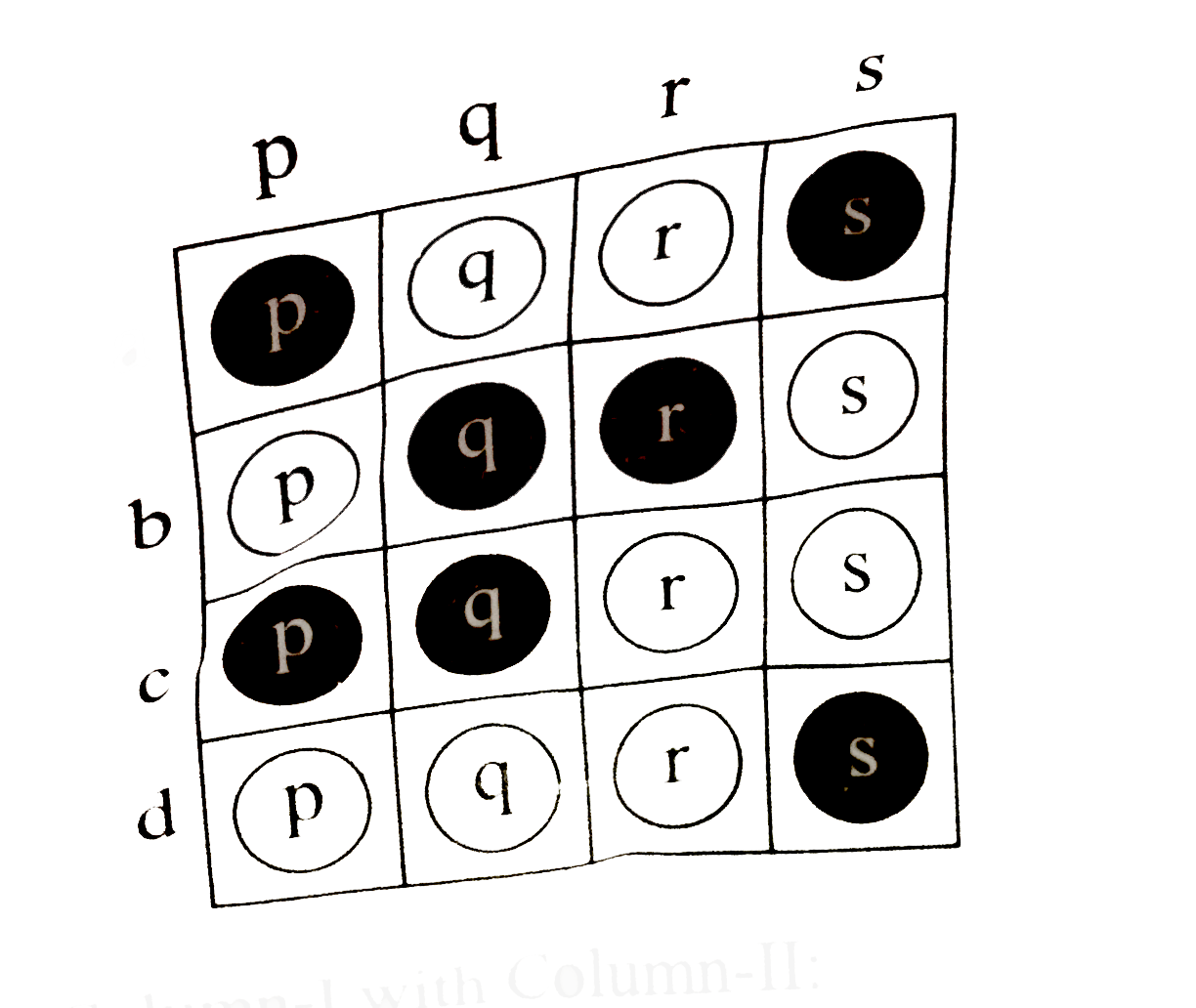Crystal field theory was proposed by H.beths (1929) and Van Vleck (1932) and as originally applied to ionic crystals to explain their optical properties and is, therefore, called crystal field theory, however, this theory was applied to the study of coordination compounds in 1950 and this theory accounts for more satisfactory expalnation for the properties of complexes especially colour and magnetism.
What is the hybridisation of [Ni(H2O)6]2+?
sp3d2
d2sp3
sp3d
dsp3
The correct Answer is:A
[Ni(H2O)6]2+:

Topper's Solved these Questions
- COORDINATION COMPOUNDSBOOK - OP TANDONCHAPTER - COORDINATION COMPOUNDSEXERCISE - COMPREHENSION 29
2 Videos
- COORDINATION COMPOUNDSBOOK - OP TANDONCHAPTER - COORDINATION COMPOUNDSEXERCISE - COMPREHENSION 30
5 Videos
- COORDINATION COMPOUNDSBOOK - OP TANDONCHAPTER - COORDINATION COMPOUNDSEXERCISE - COMPREHENSION 27
3 Videos
- CLASSIFICATION AND NOMENCLATURE OF ORGANIC COMPOUNDS BOOK - OP TANDONCHAPTER - CLASSIFICATION AND NOMENCLATURE OF ORGANIC COMPOUNDS EXERCISE - INTEGER
2 Videos
- ELECTROCHEMISTRYBOOK - OP TANDONCHAPTER - ELECTROCHEMISTRYEXERCISE - Matrix-Matching Type Question
3 Videos
Similar Questions
Ligands can be classified by various ways, based upon charges, denticity and interaction between ligand and central atom.
Which of the following ligand is unsymmetrical bidentate ligand as well as having chiral centre which cannot be made symmetrical at all giving rotation around any single bond ?
View SolutionInspired by Alfred Werner (1866-1919), a KOTA student decided to reconduct a similar experiment on unknown salt samples of MCl3.xNH3. The student found that some of the chloride ions could be prdipitated as AgCl on adding silver nitrate solution. He found that this salt was of 4 years (based on colour). He labelled these complexes as A (yellow complex) B( purple complex), C (Green complex), D (violet complex).
He found that moles of AgCl precipitated (per mole of salt) in one case was 3, one case it was 2, and in two cases it was one.
He then measured the electrical conductivity of various salt solutions and found that D had the lowest value.
He then measured the boiling point of solutions of A, B, C, D and found that B had the 2nd highest boiling point, Based on the above information, answer the following questions.
If all the complexes taken by the student were cystalline, then, what is the possible molecular formula of the complex having least boiling point?
View SolutionWerner proposed coordination theory to explain the properties and stuructures of various metal ammines of cobalt, chromium, platinum, etc. It was first successful attempt which satisfactorily described the formation of coordination compounds from stable molecules.
Which of the following has four number of ions in aqueous solution ?
View SolutionThe total number of alkyl groups having the molecular formula (c)C3H7(b)C4H9(c)C5H11 are.
View SolutionThis section contains 3 questions. Each question contains statement given in two columns which have to be matched. Statement (a, b, c and d) in Column-I have to be matched with statement (p, q, r and s) in Column-II. The answers to these questions have to be appropriately bubbled as illustrated in the following examples :
If the correct matches are (a-p, s), (b-q, r), (c-p, q) and (d-s), then correct bubbled 4×4 matrix should be as follows:

Match the column-I with Column-II :

View SolutionThe crystal field theory attributes the colour of cooedination compounds to
View SolutionExplain the violet colour of the complex [Ti(H2O)6]3+ on the basis of crystal field theory.
View Solutionक्रिस्टल क्षेत्र सिद्धान्त को समझाइए |
View SolutionCrystal field theory was proposed by H.beths (1929) and Van Vleck (1932) and as originally applied to ionic crystals to explain their optical properties and is, therefore, called crystal field theory, however, this theory was applied to the study of coordination compounds in 1950 and this theory accounts for more satisfactory expalnation for the properties of complexes especially colour and magnetism.
What is the geometry of [Co(NH3)6]2+?
View SolutionCrystal field theory was proposed by H.beths (1929) and Van Vleck (1932) and as originally applied to ionic crystals to explain their optical properties and is, therefore, called crystal field theory, however, this theory was applied to the study of coordination compounds in 1950 and this theory accounts for more satisfactory expalnation for the properties of complexes especially colour and magnetism.
Which of the following complex is paramagnetic in nature ?
View SolutionCrystal field theory was proposed by H.beths (1929) and Van Vleck (1932) and as originally applied to ionic crystals to explain their optical properties and is, therefore, called crystal field theory, however, this theory was applied to the study of coordination compounds in 1950 and this theory accounts for more satisfactory expalnation for the properties of complexes especially colour and magnetism. What is the hybridisation of [Ni(H_(2)O)_(6)]^(2+) ?
View SolutionCrystal field theory was proposed by H.beths (1929) and Van Vleck (1932) and as originally applied to ionic crystals to explain their optical properties and is, therefore, called crystal field theory, however, this theory was applied to the study of coordination compounds in 1950 and this theory accounts for more satisfactory expalnation for the properties of complexes especially colour and magnetism.
What is the geometry of [Co(NH3)6]2+?
View SolutionCrystal field theory was proposed by H.beths (1929) and Van Vleck (1932) and as originally applied to ionic crystals to explain their optical properties and is, therefore, called crystal field theory, however, this theory was applied to the study of coordination compounds in 1950 and this theory accounts for more satisfactory expalnation for the properties of complexes especially colour and magnetism. Which of the following complex is paramagnetic in nature ?
View Solutionक्रिस्टल क्षेत्र सिद्धान्त को समझाइए।
View SolutionBethe and Van vleck proposed a coordination theory named as …………..
View Solution
